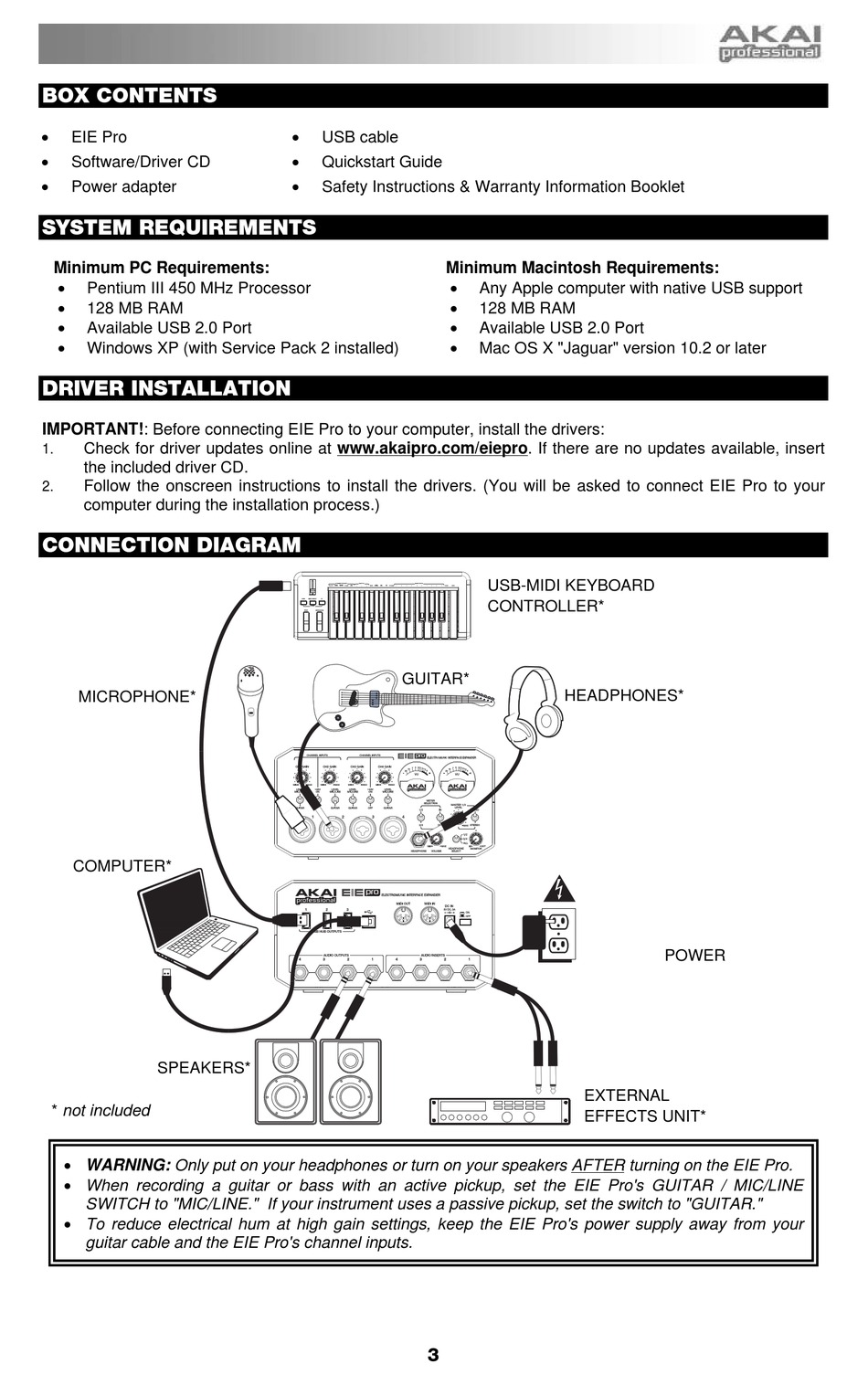Each channel of the EIE has an XLR-¼” combo jack, dedicated gain-pot and Mic/Line/Guitar switch. The EIE features four discrete-design preamplifiers with 48V phantom power for use with virtually any microphone. Individual ¼” nickel-plated jacks found on the back of EIE provide you with channel inserts for processing audio signals externally. You can monitor sessions on multiple sets of studio monitors using the four ¼” balanced outputs, which are also nickel-plated. Both pairs of outputs can be monitored visually with the high-quality, analog VU meters providing classic features with modern style. For remote tracking and alternative playback, the EIE has a 1/4” TRS headphone output. High quality analog-to-digital and digital-to-analog converters ensure that every detail of your session or performance gets captured and played back faithfully.
The EIE sends and receives four audio channels on a single USB cable for simple, universal interface to your computer. The three additional USB 1.1 ports allow the EIE to function as a hub as well, bridging other MIDI controllers and hard-drives to the computer. EIE's USB interface is class compliant for plug-and-play operation with Mac OS X and Windows XP, Vista and 7. The EIE features traditional MIDI In and Out jacks for playing and controlling software with keyboard and pad controllers, workstations, and other MIDI-compatible instruments.
How to Update EIE Pro Device Drivers Quickly & Easily

Step 1 - Download Your Driver
To get the EIE Pro driver, click the green download button above. After you complete your download, move on to Step 2.


Lastly, we'll head to the Driver Settings tab. Make sure the Playback Timing Master is set to Akai EIE Pro ASIO Driver Out 1 and Record Timing Master is set to Akai EIE Pro ASIO Driver In 1. Now all that is left is to add audio tracks and assign the inputs! To do this, go to Insert Audio Track. This will create a new analog audio. New Akai EIE Pro Audio Interface/Expander. New Akai EIE Pro Audio Interface/Expander. EIE's USB interface is class compliant for plug-and-play operation with Mac OS X and Windows XP, Vista and 7. The EIE features traditional MIDI In and Out jacks for playing and controlling software with keyboard and pad controllers, workstations, and other MIDI-compatible instruments. Get connected with the EIE from Akai Professional. Many products are compatible with Windows 10 and there are no known issues with any Akai Pro items. Below is a list of our current hardware products and their driver compatibility with Microsoft Windows 10. Note: Newly released operating systems always carry a risk of introducing unforeseen difficulties. If your projects are time-sensitive, we.
If the driver listed is not the right version or operating system, search our driver archive for the correct version. Enter EIE Pro into the search box above and then submit. In the results, choose the best match for your PC and operating system.
Tech Tip: If you are having trouble deciding which is the right driver, try the Driver Update Utility for EIE Pro. It is a software utility which automatically finds and downloads the right driver.
Step 2 - Install Your Driver
Once you have downloaded your new driver, you'll need to install it. In Windows, use a built-in utility called Device Manager, which allows you to see all of the devices recognized by your system, and the drivers associated with them.
How to Open Device Manager
In Windows 10 & Windows 8.1, right-click the Start menu and select Device Manager
In Windows 8, swipe up from the bottom, or right-click anywhere on the desktop and choose 'All Apps' -> swipe or scroll right and choose 'Control Panel' (under Windows System section) -> Hardware and Sound -> Device Manager
In Windows 7, click Start -> Control Panel -> Hardware and Sound -> Device Manager
In Windows Vista, click Start -> Control Panel -> System and Maintenance -> Device Manager
In Windows XP, click Start -> Control Panel -> Performance and Maintenance -> System -> Hardware tab -> Device Manager button
Akai Professional Eie Drivers Mac
How to Install a driver from Device Manager
Locate the device and model that is having the issue and double-click on it to open the Properties dialog box.
Select the Driver tab.
Click the Update Driver button and follow the instructions.
In most cases, you will need to reboot your computer in order for the driver update to take effect.
Tech Tip: Driver downloads and updates come in a variety of file formats with different file extensions. For example, you may have downloaded an EXE, INF, ZIP, or SYS file. Each file type has a slighty different installation procedure to follow.
Akai Eie Pro Driver Mac
For more help, visit our Driver Support Page for step-by-step videos on how to install drivers for every file type.